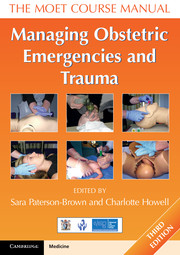Book contents
- Frontmatter
- Dedication
- Contents
- Working Group
- About the authors
- Acknowledgements
- Abbreviations
- Section 1 Introduction
- Section 2 Recognition
- Section 3 Resuscitation
- Section 4 Trauma
- Section 5 Other medical and surgical emergencies
- Section 6 Obstetric emergencies
- Section 7 Triage and transfer
- 39 Triage
- 40 Transfer
- Section 8 Human issues
- Index
39 - Triage
- Frontmatter
- Dedication
- Contents
- Working Group
- About the authors
- Acknowledgements
- Abbreviations
- Section 1 Introduction
- Section 2 Recognition
- Section 3 Resuscitation
- Section 4 Trauma
- Section 5 Other medical and surgical emergencies
- Section 6 Obstetric emergencies
- Section 7 Triage and transfer
- 39 Triage
- 40 Transfer
- Section 8 Human issues
- Index
Summary
Objectives
On successfully completing this topic, you will be able to:
understand the systematic approach advocated for prioritisation when casualties exceed resources available
understand why prioritisation is essential in emergency situations including obstetrics.
Introduction
The word ‘triage’ is derived form the French trier, to sort or to sift as through a sieve. The word was originally used to describe the process of selecting coffee beans. Triage was first described in modern times by Baron Dominique Jean Larrey, who was Napoleon's Surgeon Marshal. He introduced a system of sorting casualties presenting to field dressing stations to ensure that soldiers with only minor wounds could be returned quickly to the battlefield with minimum treatment. In more recent times, triage has become a daily management tool within civilian emergency departments.
The aim of triage in civilian practice, wherever it is carried out, is not only to deliver the right patient to the right place at the right time so that they receive the optimum treatment but also to treat the most urgent ahead of the less urgent. Triage principles should be applied whenever the number of patients exceeds the skilled help immediately available.
Triage can be applied to acute medical and obstetric workloads. It can take place formally, as in the management of major incidents, or as a routine approach to our day-to-day practice in resuscitation rooms or on delivery suites. Triage must reflect the changing state of the patient and is therefore a dynamic, rather than a static, process; regular reassessment of priorities across patients is vital.
- Type
- Chapter
- Information
- Managing Obstetric Emergencies and TraumaThe MOET Course Manual, pp. 453 - 458Publisher: Cambridge University PressPrint publication year: 2014

